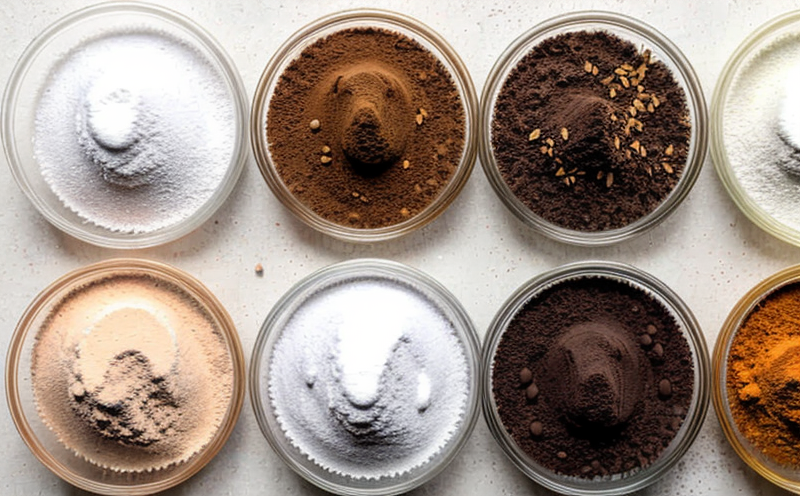ISO 26534 Curcumin Residue Analysis in Curry Powders
The implementation of ISO 26534 for curcumin residue analysis is critical for ensuring the safety and quality of curry powders. This standard provides a robust methodology to detect and quantify the presence of curcumin, a natural coloring agent derived from turmeric, within these products.
Curry powders are popular across various cuisines, and their popularity continues to grow globally. The use of natural colorants like curcumin ensures that the product maintains its vibrant yellow hue, which is not only an aesthetic appeal but also a quality indicator for consumers. However, the presence of curcumin in curry powders must be within acceptable limits to avoid potential health risks associated with excessive consumption.
The methodology described in ISO 26534 involves several key steps. Initially, sample preparation is crucial. A homogenous sample of the curry powder is taken and ground into a fine powder if necessary. This ensures that all parts of the sample are analyzed equally. The next step is the extraction process, where solvents such as methanol or ethanol are used to extract curcumin from the sample.
The extracted solution is then subjected to high-performance liquid chromatography (HPLC) for further analysis. HPLC allows for precise separation and quantification of curcumin within the curry powder. The method also includes a calibration curve, which helps in determining the exact concentration of curcumin present. It’s essential that this process adheres strictly to ISO 26534 guidelines to ensure accurate results.
The acceptance criteria for this analysis are stringent and are based on the limits set by relevant food safety standards such as the Codex Alimentarius. These limits aim to balance the natural coloring benefits of curcumin with potential health risks, ensuring that products meet international safety standards.
Accurate residue analysis is not only crucial for regulatory compliance but also enhances consumer trust and satisfaction. By adhering to ISO 26534, manufacturers can demonstrate their commitment to quality and safety, which is especially important in the competitive global market of curry powders.
Customer Impact and Satisfaction
The implementation of ISO 26534 for curcumin residue analysis directly impacts several aspects of customer satisfaction:
- Informed Decision-Making: Customers can trust that the product adheres to international standards, ensuring they are making safe purchasing decisions.
- Risk Reduction: By reducing the risk associated with excessive curcumin consumption, customers feel more secure about their choices.
- Consistent Quality: The standardized process ensures consistent quality across different batches of curry powder, leading to repeat purchases and brand loyalty.
Competitive Advantage and Market Impact
The use of ISO 26534 for curcumin residue analysis provides significant competitive advantages in the market:
- Regulatory Compliance: Ensuring compliance with international standards can open doors to new markets where stringent regulations are in place.
- Consumer Confidence: By meeting or exceeding these standards, companies can enhance their reputation and gain a competitive edge.
- Premium Positioning: The ability to offer products that adhere to higher safety and quality standards positions the company as a leader in its market segment.
Scope and Methodology
The scope of ISO 26534 is focused on providing a precise method for measuring curcumin residues in curry powders. This standard ensures that the analysis is accurate, reproducible, and reliable.
The methodology outlined in this document involves several stages:
- Sample Preparation: The sample must be homogenized to ensure uniformity. If necessary, it can be ground into a fine powder.
- Extraction Process: Solvents such as methanol or ethanol are used to extract curcumin from the curry powder.
- Analytical Method: The extracted solution is analyzed using high-performance liquid chromatography (HPLC). This method provides precise separation and quantification of curcumin within the sample.
The acceptance criteria for this analysis are based on limits set by Codex Alimentarius, which ensures that the product meets international safety standards. This standard is essential for ensuring that the curry powder does not contain excessive levels of curcumin, which could pose health risks if consumed in large quantities.





